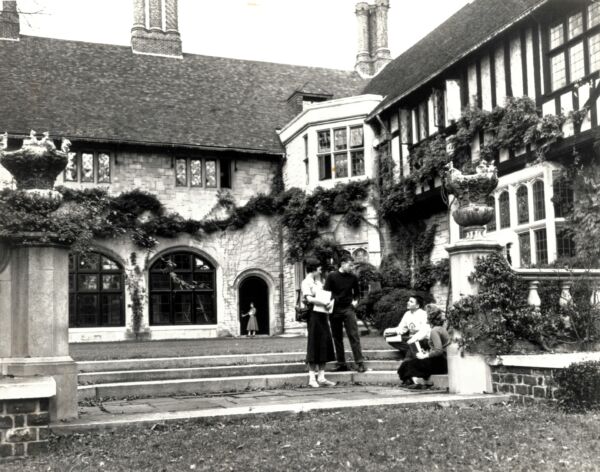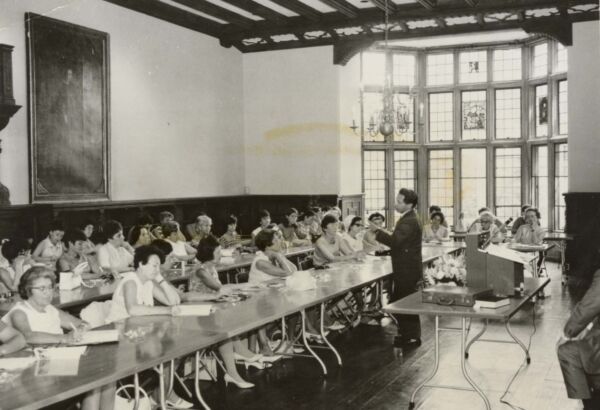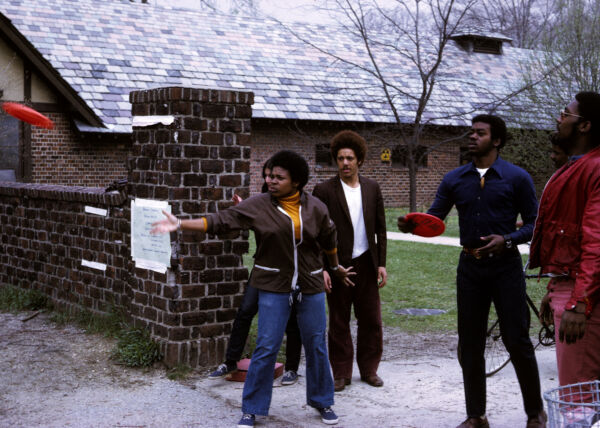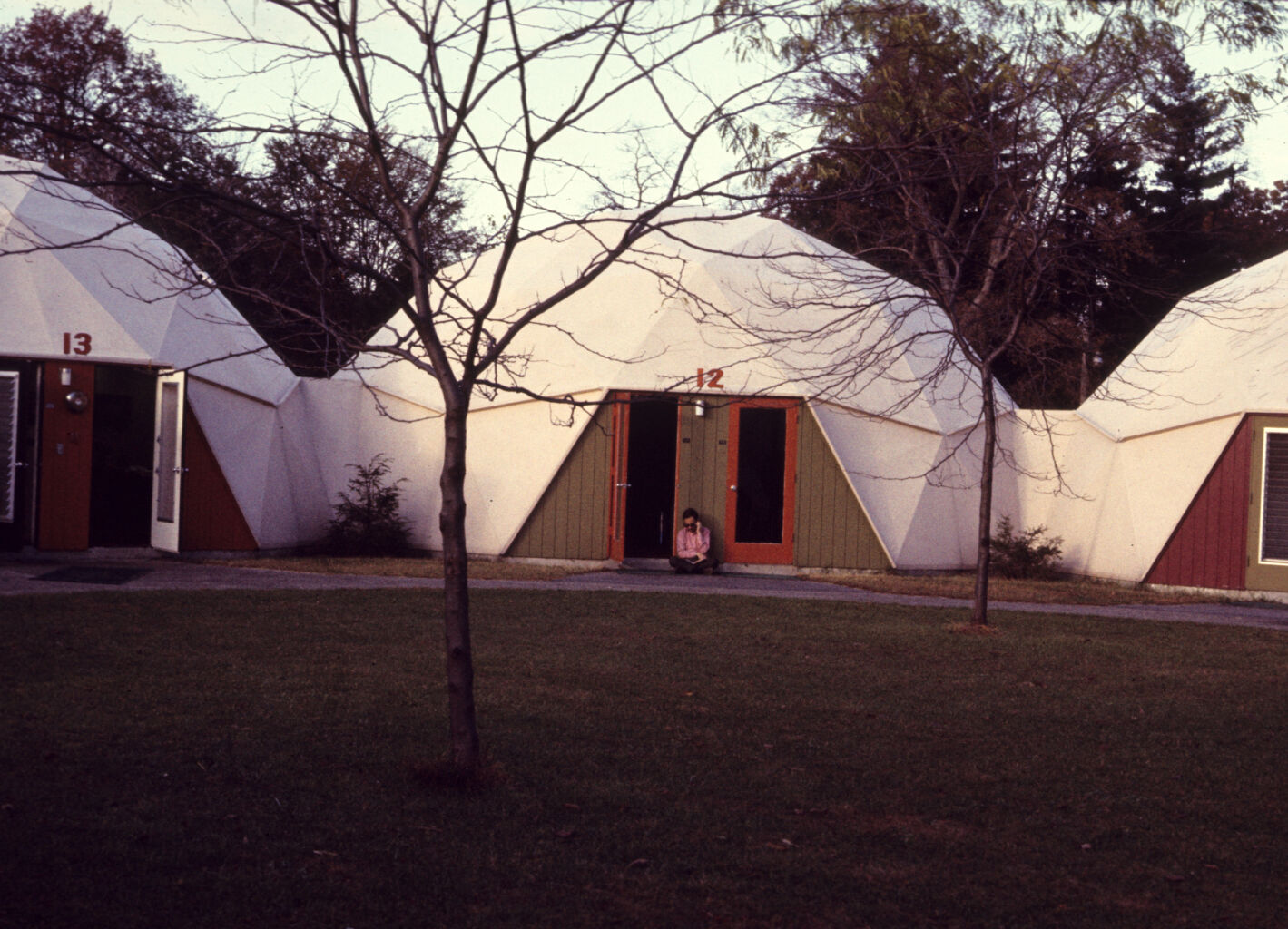It’s hard to believe that Planting Fields was home to not one but three State University of New York (SUNY) programs. After W.R. Coe deeded Planting Fields to the people of New York in 1949, he intended the site to be used as a place for “training and research in agriculture, horticulture, arboriculture, and landscaping.” As early as 1944, W.R. was in conversation with Halsey Knapp and Carl Wedell, who oversaw the Long Island Agricultural and Technical Institute at Farmingdale (today, Farmingdale State College). Together, they envisioned Planting Fields as an ideal location to study ornamental horticulture.
SUNY Long Island Center (1957-1962)
The planning stages for the Farmingdale program were cut short by the need for a campus for a new college: the State University Long Island Center. Originally focused on science, mathematics, and engineering (primarily for teachers), the school would reside temporarily at Planting Fields until the new campus was completed in Stony Brook. The bedrooms on the second floor were converted into classrooms, and the first floor was transformed into a library, study area, and coffee shop [i]. As the student body grew, more classrooms and laboratories were added in the form of geodesic domes and the Butler lab building. In 1960 it was designated as a university center, and additional degrees were added in humanities and social sciences. By the fall of 1962, many of the students moved to the new campus in Stony Brook.

Students by the Circular Pool, note the enclosed cloister, circa 1957. Courtesy of Special Collections and University Archives, Stony Brook University Libraries.
International Studies and World Affairs (1965-1968)
Established in 1965, the International Studies and World Affairs (ISWA) center was located at Planting Fields and served as a SUNY-wide initiative to provide leadership and cohesion to the university system’s international programs. The Center aimed to address campus needs, assist in the development of broad policy, and promote a unified approach to SUNY’s global engagement activities. The Center was a think tank for foreign study and exchange for faculty and students. It hosted forums, seminars, and experimental non-credit continuing education courses. Director Richard L. Whitford strived to return the Main House to its Tudor glory and acquired furniture through generous donations. In the summer of 1968, the program was relocated to Albany, New York.

Dr. Leon Snider lecturing at first session of a continuing education program titled “Cultures in Transition: Laos, Cambodia, Vietnam and Thailand” at Planting Fields, July 17, 1967, Planting Fields Foundation Archives.
SUNY Old Westbury (1968-1971)
SUNY Old Westbury also got its start at Planting Fields. The experimental college sought to create a student-faculty partnership and was described as a combination of “Oxford and the Peace Corps.” After a fire at their Old Westbury campus in the spring of 1968, the college not only needed a temporary home but an incubator to formulate the pedagogy and governance of the program. Classes were held in the geodesic domes and action-oriented education replaced traditional lectures. Emphasis was placed on the Great Books program, craftsmanship, and social work. These were tumultuous years at Planting Fields, characterized by upheaval occurring at college campuses nationwide. After a shutdown in the spring of 1970, the program gradually phased out and, in the fall of 1971, a new version of the college was instituted back in Old Westbury.

“Frisbee Olympics” at the Hay Barn, circa 1970, photo by Jon Angel courtesy of SUNY Old Westbury Oral History Project.
W.R.’s son, William Rogers Coe, expressed frustration that the SUNY programs did not align with his father’s wishes to promote horticultural education and United States history. However, throughout the 1960s, Farmingdale continued to utilize the site for field study and there were annual American Studies institutes (a topic for a future blog post). The SUNY years at Planting Fields are a microcosm of the seismic changes that occurred during the 1960s. They encapsulate shifts in education reform, social responsibility, and international affairs. In 1971 Planting Fields was transferred to the Long Island State Park Commission (today, NYS Parks, Recreation, and Historic Preservation) marking the end of the SUNY era.
– From Marie Penny, Michael D. Coe Archivist
[i] Nyitray, K. and Becker, A. (2002). Stony Brook State University of New York. Arcadia.
Header image: Geodesic dome, circa 1970, photo by Jon Angel, courtesy of SUNY Old Westbury Oral History Project.

